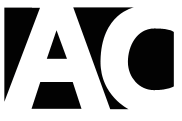
For the last half decade, you couldn’t login to Facebook or Twitter without stumbling upon posts that attempted to blatantly manipulate you into clicking.
An entire industry sprang out of the mindless hours people spend clicking into and out of articles they find in social media feeds. And the results were compelling.
2 year old Beagle gets a new ball and you’ll NEVER believe what happens next…
What type of coffee drinker are you? (#8 will SHOCK you!)
For years he worked 8 hours a day until something unspeakable happened…
The problem isn’t the titles of these articles. We love to read about incredible things and if a story is legitimately incredible, please tell me about it.
The problem is that none of these stories were all that great.
Sites like Upworthy, TheBlaze, and Huffington Post stopped describing or even intimating what their articles were about – instead, they published thousands of relatively boring articles every week and promoted them with evocative headlines designed to increase clicks and pageviews (and in turn ad revenue), quality be damned.
Fortunately, Facebook eventually caught on. A few months ago, they updated their algorithm to filter out a good amount of these stories from appearing in your news feed.
These sites can still pay for placement, but the tidal waves of organic traffic they once enjoyed from Facebook are subsiding.
Of course, for those in the marketing industry, it poses a different question – how do we create evocative content that entices people to share and link back to our sites without the trick pioneered by the web’s biggest publishers?
The Secret to Good Link Bait
There’s a lot of content on the Internet. So much that merely publishing a blog post, no matter how good it might be, isn’t enough to elicit action of any kind. You need other people to read, share, and link to that content.
Promotion plays a big part in this – a good content marketing campaign is 50% creation and 50% promotion.
But if you take the time to prepare content that is as enticing as possible without being manipulative, you can further increase your odds of success.
Here are five examples of link bait that has always worked and continues to work in a post-clickbait social media environment:
- List Articles – I know what you’re thinking. Does the world really need MORE of these? The simple answer is no, but a good list topic can be a useful hook to go with an otherwise more substantial blog post. Lists of 20 items with two sentences each are boring and easy to replicate. A good, long list with detail on important topics will get you where you want to be. Buzzfeed has refined this format to a sharp point, but others are coming up with new takes constantly (see Totino’s brilliant take on a Buzzfeed article last year: http://www.totinosliving.com/article/buzzfeeds-50-unusable-stock-photos-used/).
- Detailed Walkthroughs – Go deeper than the typical list article by creating detailed walkthroughs of new products, services, or technologies in your niche.
- Interviews with Experts – Interview an expert in your field. They are much easier to find and get on camera or microphone than you might think. Even if you just record a 30 minute Skype call and transcribe it, that content will be gold.
- Video Content – Video remains the strongest performing type of content on the Internet. It doesn’t have the SEO legs of a well written blog post (yet) but it is far more likely to be shared and liked on a wide scale if you have something new and unique to share with the world.
- New Strategies for Old Problems – One of the biggest pushback I hear about lists and walkthroughs is that there are already hundreds if not thousands of articles on the same topics. Think of something wholly unique to use in those articles, though, and you can take off in your niche and become an instant authority because of it.
There are hundreds of types of content that work, but these five are particularly good because they give you the fuel needed to drive clicks without falling into the questionable hole that most modern clickbait climbs out of.
It takes more than a good type of content to succeed though. Good link bait needs to do more.
The Three Most Important Elements of Link Worthy Content
- Refine and Improve What Already Works – Don’t try to reinvent the wheel. Spend some time researching your competitors, see what worked best for them, and reverse engineer it. Write your take on the same topic and improve where you see room for improvement. BuzzSumo is a great tool to find the most popular posts in a given niche.
- Be Yourself and Build a Loyal Following – Inject personality into your content. Tell personal stories, add fun jokes, and be who you are. Don’t whitewash the content or hide behind big words and generic anecdotes.
- Create Relationships with the People Who Will Share Your Content – Connect with other bloggers, create relationships on Twitter and Facebook, and contact people via email to ensure they know you exist. Follow the rest on this list and those people will gladly share what you’re writing.
If you do these three things, your content will generate links faster than you can write your next post. More importantly, you’ll resonate with your target audience, and develop a loyal following of people who keep coming back to your site for more of the same.
Linkworthy is not the same as clickworthy. Anyone can trick someone into opening a door, but getting the to walk in after they see what’s on the other side is a whole other thing. If you can do both while remaining loyal to your voice and what makes your content unique, you’ll find immense success through content marketing.
Interested in creating more content faster? Click here or the link below to download my free eBook with 21 Content Creation Hacks for your business:





